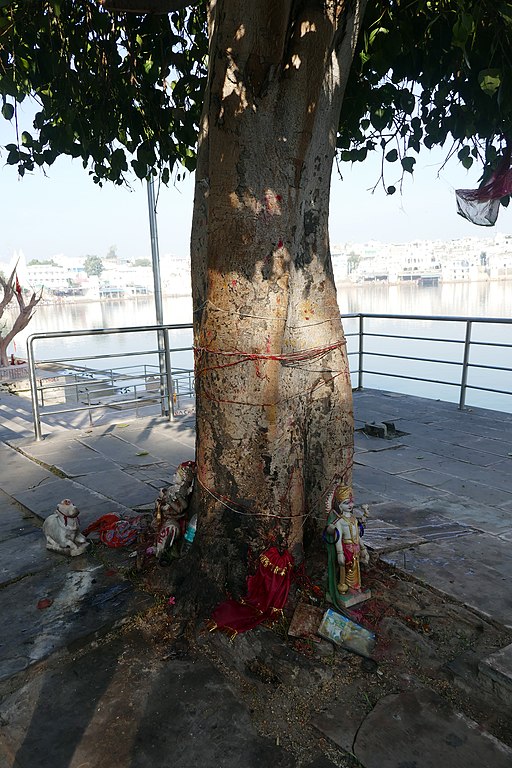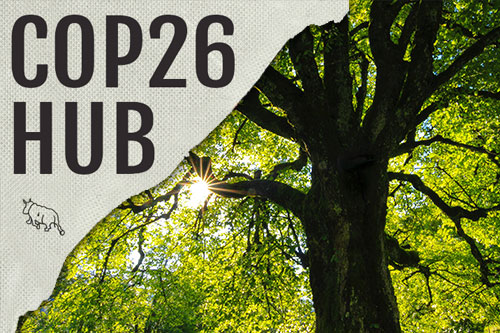Find out more about The Open University's Geography and Environmental Science degree.
In my recent visit to Pune (Maharashtra, India), the city where I grew up, at the peak of Indian summer in May when the sweltering heat is beating down the streets, I was struck by the cool shade under large urban trees. It’s the kind of place where you want to be sipping sugarcane juice freshly made by a street hawker who has set up a shop under the tree. This is not atypical of South Asian cities. One would find greenery in the most unexpected places and what is even more astonishing is that this greenery is not just an ornamental feature of the city, but it has some very practical uses. It provides a place for small businesses to set up their stalls and entice commuters with goods and services that are just right for their needs. And it’s not just sugarcane juice vendors or flower sellers, I have occasionally seen a shoe polish stall or a hairdressing salon set up under urban trees. This is a mesmerising combination of ecology and economy in action. In this article, I will explore this unique heritage in South Asian cities and suggest that we need to celebrate it as much as we celebrate the Taj Mahal, the renowned symbol of love, or Mohenjodaro, the centre of an ancient civilisation, or Lumbini, the birthplace of Gautam Buddha.
 Sacred fig tree, Ajmer, Rajhastan, India
Sacred fig tree, Ajmer, Rajhastan, India
Natural heritage
Even in highly populated and crowded cities of South Asia, urban nature is never far away. Trees are protected for their religious symbolism. Different types of fig trees are very common in Indian cities, the peepal tree (Ficus religiosa) being one of the commonest. It’s a magnificent tree that towers up to 30 metres and has a canopy that is shaped like a giant umbrella – just what you need to cope with the sweltering heat in hot summer months. But it is also a whole ecosystem in itself. Its lofty tree-trunk complete with crevices, nooks and crannies provides a perfect habitat for insects and spiders; its expansive and perennial lush green canopy provides nesting and roosting places for birds and bats; and its fruits provide much-needed nourishment for birds and small mammals like squirrels, not to mention all the mosses, lichens or epiphytes like orchids that can grow on the tree trunk. All put together, one can find dozens of species and hundreds of creatures living on just one fig tree in the middle of a busy South Asian city where you would least expect to find them. With their long lifespans of hundreds of years, such trees are also important to soak up the carbon dioxide that our industrial societies spew out. It is said that Gautam Buddha attained enlightenment under this tree, so there is also a spiritual dimension to this natural heritage.A flower stall under a fig tree in Kolkata, West Bengal, India
Cultural heritage
What is remarkable about such urban trees is the cultural heritage they support. These trees often have a simple stone shrine underneath with modest offerings of flowers or garments or small idols of gods and goddesses. This signals the cultural, religious and spiritual importance of these trees to people. Without such active protection many of these trees would have succumbed to rapid urban development. But it is not just their non-instrumental spiritual value, these trees offer other direct and instrumental benefits. It is well known that in South Asian cultures the phenomenon of ‘Jugaad’ is common. This is a flexible approach to problem-solving that uses limited resources in an innovative way. Despite rapid urbanisation and increasing standards of living in cities, poverty is still rife, particularly among economic migrants who leave behind their rural agricultural base and move to cities. Such economic migrants often have to make ends meet by setting up small businesses such as street stalls. These businesses become their economic lifeline with which to feed themselves and their families in their new urban home. It is not uncommon for penniless entrepreneurs to quickly find an occupation, whether it’s preparing street food or selling flowers or even providing services such as polishing people’s shoes or giving them haircuts. Surprisingly, the large urban trees provide exactly the kind of facilities they need to set up a make-shift shop – a reasonably clean shop floor and shelving around the tree-trunk, and a roof overhead made by the tree’s evergreen foliage. And all this comes for free, without having to pay the rent. This facility is a lifeline for those economic migrants who have just arrived from a village and have no other means than their ingenuity to start a business.
As we celebrate South Asian Heritage month, these small examples of natural and cultural heritage are worthy of notice. They are not as glamorous as the Taj Mahal nor do they have any connection with the celebrated ancient civilisations that South Asia is well known for, but they are the living examples of heritage that are very relevant to everyday lives of people and nature today. They are what provide a refuge to nature in cities otherwise crowded with people and they are what also make the informal economy of cities tick along.





Rate and Review
Rate this article
Review this article
Log into OpenLearn to leave reviews and join in the conversation.
Article reviews